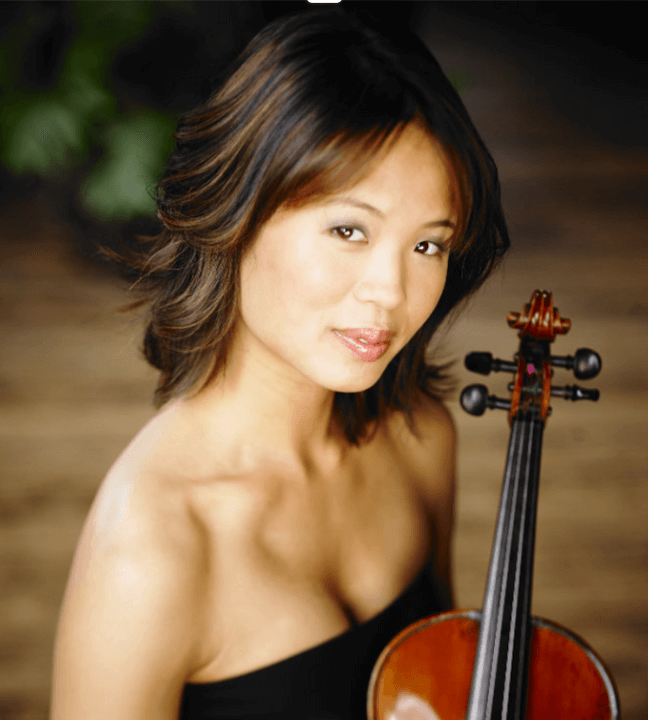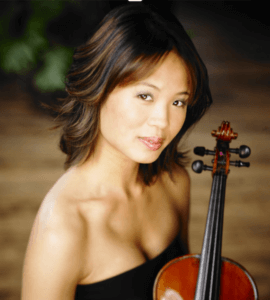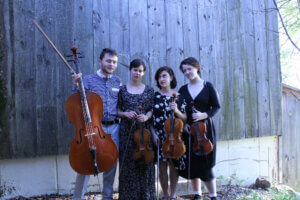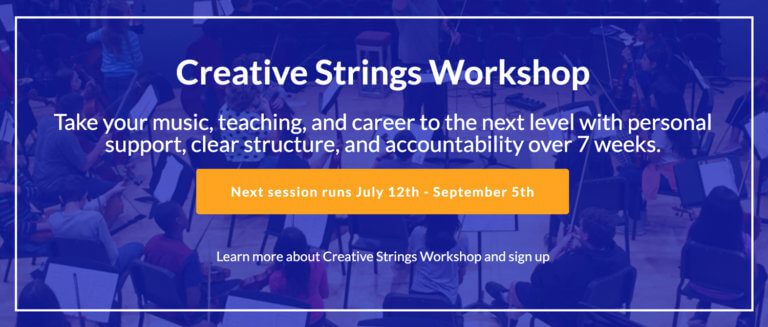different Types of Violin Bowing for different Violin Playing Superpowers
Dr. Lynn Kuo and I discussed different types of violin bowing techniques for fiddle, jazz and classical violinists. We covered how much bow to use, when to change the bow, the advantages and disadvantages of lifting the bow, the advantages of improvised bowing exercises, and much more. Listen, watch, or read below to learn how different types of bowing techniques can be useful for optimizing tone control, rhythmic precision, and expressive playing in different musical settings.
Watch/Listen to our Discussion and illustration of different types of violin bowing
Thanks to our sponsor Electric Violin Shop
For help with “all things electric strings”, call Electric Violin Shop at 866-900-8400, and they will personally answer your questions about pickups, electric string instruments, sound equipment, accessories, and more.
Adapted transcript: Pros and Cons of Different Violin Bowing Types
Christian Howes: Today, I’m excited to explore how our violin performance techniques can differ when improvising, playing fiddle music, or jazz (on all bowed string instruments. These differences impact thythm, sound, confidence and psychology while playing.
As a classically trained Jazz violinist, I’ll admit that I do not spend nearly as much time these days practicing classical bow techniques like col legno, sul ponticello and sul tasto. Nor do I focus on bow bounces of the spiccato notes variety… and other orchestral violin bowing techniques.
This is mainly because I am more interested in improvisational music of all kinds. And in order to be good at doing MANY things well musically, I believe it requires a choice of excluding some things from my practice.
However I do care about seamless bow changes, cotinuous bow stroke, smooth bowing, full lenght bows, playing at the frog, tip, and middle of the bow, and maximizing playing technique in general- just not exclusively for classical situations.
All things considered, as a teacher, I find this to be highly relevant to my students, many of whom have diverse interests and experience levels. Some of my students are adult learners with an interest in playing fiddle tunes, playing in worship bands, playing amplified, and they are not trying to win an audition in a major orchestra or even necessarily perform classical violin repertoire. I believe my students should not be forced into a classical box to learn to play the violin. They should be given practice exercises and coaching that fits their needs.
Dr. Lynn Kuo is renowned for helping elite classical violin players succeed in auditions and elevate their violin practice skills. I welcome the chance to get her feedback on some of my thoughts about how different types of violin bow technique can be best approached and taught.
Welcome, Dr. Lynn Kuo!
Lynn Kuo: Thanks for having me, Chris! This is our first collaboration, right?
Christian Howes: Yes, it is. I’ve admired your content on YouTube for years, and your free PDF is fantastic.
Lynn Kuo: Thank you! I remember attending your workshop years ago. You changed how I think about harmony and technique.
Christian Howes: I appreciate that!
Use Less Bow and Fewer Bow Changes to Optimize for Rhythmic Precision
Christian Howes: Classical training emphasizes using a lot of bow. For using the bow in nonclassical settings, I recommend using less bow and fewer bow changes. Because classical players often use more bow to fill an acoustic hall, but when amplified, we don’t need to do that.
Lynn Kuo: I agree. Classical technique focuses on tone production, controlling the bow from frog to tip. However, in amplified settings, using less bow can enhance dynamic control. It’s crucial to spend time on bow control for efficient practice.
Hooking and Slurring the Bow vs Detache
Christian Howes: Let’s talk about hooking and slurring. Classical players are used to practicing preset, prescribed bowings, but improvisation requires flexibility of bowings. For example, doing a portamento (down, down, down, up, up, up) shows good bow control. This skill can set you apart as it combines rhythm and bow control.
Lynn Kuo: Right; controlling the bow with long tones is essential. So, combining improvisation with technical practice is efficient. Practicing long notes (with a legato bow stroke) can be a pre-practice meditation to clear your mind and focus.
The Importance of Practicing Improvised Bowings
Christian Howes: Another vital skill for me is improvising bow direction. Classical players often follow set bowings, but improvising requires creating bowings on the fly. This improves left-hand and right-hand coordination, playing faster passages at a fast tempo. Would this be valuable from a classical standpoint?
Lynn Kuo: Absolutely. Coordinating left and right hands is a common challenge. Improvised bowings force you to address this. I like how you randomize bowings in four-note cells; it’s a practical approach.
Bite
Christian Howes: Let’s discuss “bite” or firm contact point. This technique ensures the weight of the bow engages the bow hair fully with the string for a strong sound. What do you think?
Lynn Kuo: I call it contact. It’s crucial for sound production. I teach my students to imagine the bow as a knife cutting through cheese. This visualization helps find the right weight and contact. Calm, consistent control of the bow and contact are foundational.
Christian Howes: Many players hover above the string and are afraid to use weight. Encouraging them to get the bite helps them gain confidence.
Lynn Kuo: Yes, hovering indicates tension. Relaxing the back muscles and using gravity can improve contact. Body awareness is crucial in solving technical issues and preventing injuries.
Constant Contact of the Bow on the String
Christian Howes: In jazz or fiddle bowing, I avoid lifting the bow off the string. Because, constant contact enhances efficiency and rhythm, which is critical for improvisation.
Lynn Kuo: Constant contact is efficient and contrasts with classical techniques like lifting and brushing. In improvisational styles, prioritizing rhythm over articulation can be more effective.
Christian Howes: Exactly. Prioritizing is essential. We can’t focus on everything simultaneously. For jazz, rhythm is paramount.
Lynn Kuo: Indeed, prioritizing helps focus our practice. Classical players often emphasize intonation and articulation, while improvisers prioritize rhythm and style.
Christian Howes: Everyone, check out Dr. Lynn Kuo’s free violin practice guide and educational violin technique-related content on YouTube, Facebook, and Instagram. For more from me, see free resources, live events, Zoom classes, and play-along videos here.
Thank you, Lynn, for joining us.
Lynn Kuo: Thanks for having me. It was great!
About Dr. Lynn Kuo

Dr. Lynn Kuo is an acclaimed violinist and educator known for her compelling violin performances and deep pedagogical expertise.
With a rich background that spans violin playing in classical and contemporary music, Dr. Kuo has performed as a soloist and chamber musician on stages around the world. As a violin teacher, she dedicates herself to nurturing the next generation of musicians, emphasizing technique, expression, and innovation.
Dr. Kuo’s collaborative projects extend across genres, showcasing her versatility and passion for exploring new musical territories. Her commitment to excellence and education makes her a sought-after mentor and inspirational figure in the music community.
Get her daily tips on Instagram and Youtube.










